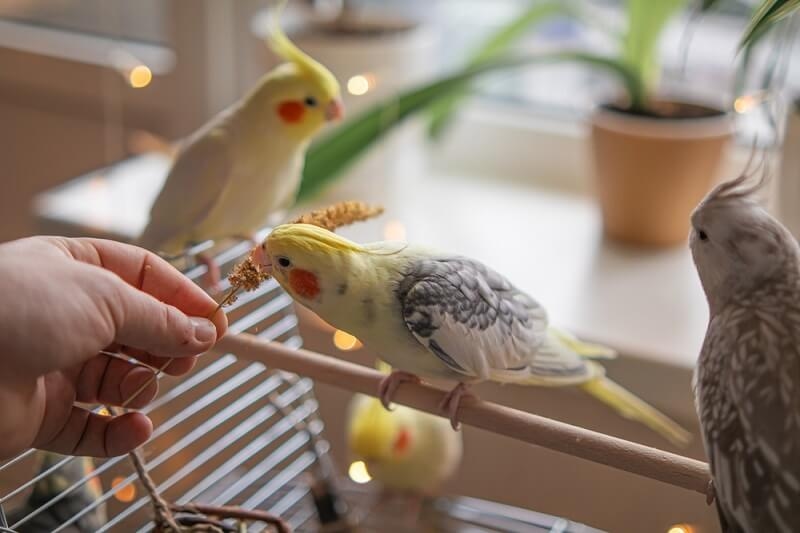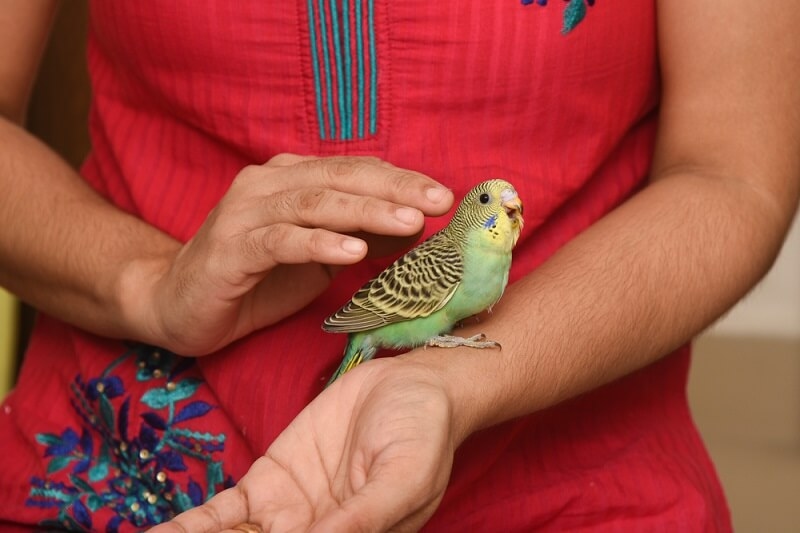
So, you’ve just brought home a little budgie, or you’re seriously thinking about it. Those bright eyes, the playful chirps, the curiosity that makes them hop around non-stop—it’s impossible not to fall in love with them. But here’s the catch: looking after a budgie isn’t just about putting seeds in a dish and walking away. They’re social, smart, and sensitive. Which means budgie bird care is a lot more than people expect at first.
If you’re a first-time bird owner, don’t worry. This guide is here to walk you through everything, from food to cage setup, bonding, and even teaching them to “chat” with you. Let’s make sure your feathered friend not only survives but thrives in your home.
When people first bring a budgie home, the first thought is usually: “Where do I even start?” The answer lies in creating a safe and comfortable foundation. That means focusing on three main things—housing, food, and social time.
Think of it like child-proofing your home, only this time it’s for a bird who doesn’t understand why chewing electrical cords or nibbling on houseplants is a bad idea. Setting things up properly in the beginning saves you from headaches later.
There’s a reason budgies are often called the ideal budgie beginner pet bird. They’re small, affordable, and relatively easy to care for compared to parrots or cockatoos. Plus, they’ve got big personalities stuffed inside tiny, colorful bodies. They’re also incredibly social, so they bond with humans faster than you might think.
But don’t let the word “beginner” fool you. They still need attention, stimulation, and the right environment. Neglect those, and your budgie could become bored, stressed, or even sick. So, while they are beginner-friendly, they’re not “no effort” pets.
The heart of any budgie’s world is its cage. And trust me, size matters. A cage that’s too small is like living in a closet. Your feathered friend needs space to flap, hop, and play. A good budgie cage setup includes:
Avoid those round cages—they look cute but actually make budgies feel trapped and disoriented. Rectangular cages give them more room and comfort. And don’t forget location. Place the cage in a quiet but social spot in your house. Too much noise stresses them out, but total isolation makes them lonely.

One of the things that gets people most excited is a budgie’s potential to talk. Believe it or not, budgies are considered among the best mimics in the bird world. Their budgie talking ability often surprises people because, unlike parrots, they have tiny voices. But with patience and repetition, they can learn words and phrases.
Start simple. Use the same word or phrase daily, ideally during play or feeding. Some owners swear by teaching words related to their budgie’s name, like “Hello Buddy.” And here’s a fun fact: males are usually better talkers than females, though that’s not a hard rule.
The key? Consistency, bonding, and patience. Don’t expect a chatty bird overnight, but when they finally say “hello” back to you, it’s worth every minute.
Seeds alone? Nope. That’s like feeding a kid nothing but fries every day. Sure, they’ll eat it, but they won’t thrive. Proper budgie daily diet care means variety. Seeds can be part of their diet, but they should be balanced with:
Avoid avocado, chocolate, and salty foods—they’re toxic to birds. If your budgie is a picky eater (and they often are), try chopping veggies into tiny bits or mixing them with their favorite seeds until they get used to the new taste.
Food isn’t just nutrition for them—it’s enrichment. Offer treats in puzzle feeders or clip veggies to the side of the cage to keep them curious and active.
Here’s where patience pays off. Budgies are prey animals by nature, which means they don’t trust easily at first. But with consistency, you can build an amazing connection.
Some tried-and-true budgie bonding tips include:
The first time your budgie hops onto your hand voluntarily? It feels like winning the lottery. Bonding takes time, but once that trust is there, your budgie will want to be part of your daily life.
Budgies are smart. Leave them in a cage with nothing to do, and they’ll get bored fast. Boredom often leads to feather plucking or constant screaming—both signs something’s wrong.
Rotate their toys often. Provide safe chew items, mirrors, or even little bells. And don’t underestimate the joy of out-of-cage time. Supervised flying in a safe room gives them exercise and keeps their mind active. Think of it as gym time and therapy rolled into one.
No one loves scrubbing cages, but it’s part of responsible ownership. Leftover food, droppings, and dirty water can cause illness. Clean food and water bowls daily, replace cage liners every couple of days, and do a thorough cage cleaning once a week.
Bathing is important too. Some budgies love a shallow dish of water; others prefer being misted lightly with a spray bottle. It keeps their feathers healthy and helps them feel refreshed.
Budgies hide illness well—it’s a survival instinct. That’s why you need to watch for subtle signs like fluffing up, sleeping more than usual, or changes in droppings. Weight loss, labored breathing, or a loss of appetite are red flags that mean a vet visit is necessary.
Annual vet checkups are smart, even if your budgie seems healthy. A quick exam can catch issues early before they become serious.
Budgies are social birds. If you can’t dedicate enough time each day to interact, consider getting them a buddy. Just make sure to introduce them slowly and provide enough space for two birds. But remember—two birds may bond more with each other than with you. It’s a trade-off you’ll need to think about.
Taking your budgie somewhere? Use a proper bird carrier, not just a cardboard box. Make sure they’re secure, comfortable, and protected from drafts. At home, be mindful of open windows, ceiling fans, and other pets. What seems harmless to us can be life-threatening to a small bird.
Taking care of a budgie is enjoyable, but it's not easy. They require more than just seeds and a cage; they need care, attention, and excitement. You have a big part to play in making them happy, from creating the ideal atmosphere to figuring out their strange habits.
Taking care of your budgie not only keeps it healthier, but it also strengthens your relationship with it. Bird owners know the satisfaction of seeing their birds grow under their care, chirping cheerfully, and maybe even echoing a few phrases back to them.
If this is your first time being a budgie parent, take a big breath. Learn, try new things, and don't be afraid to make errors (you will). Just keep being there for your little bird. If you love, be patient, and take care of your pet every day, they will be a friend who adds color and music into your life for years to come.
This content was created by AI